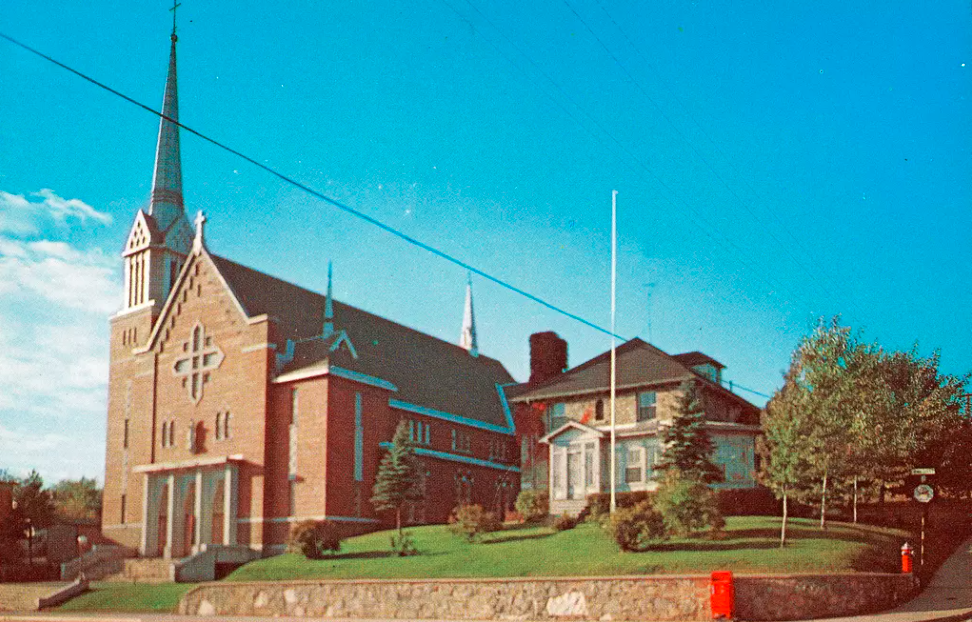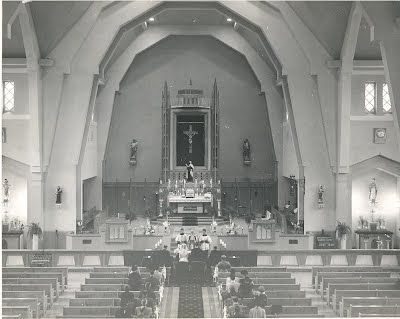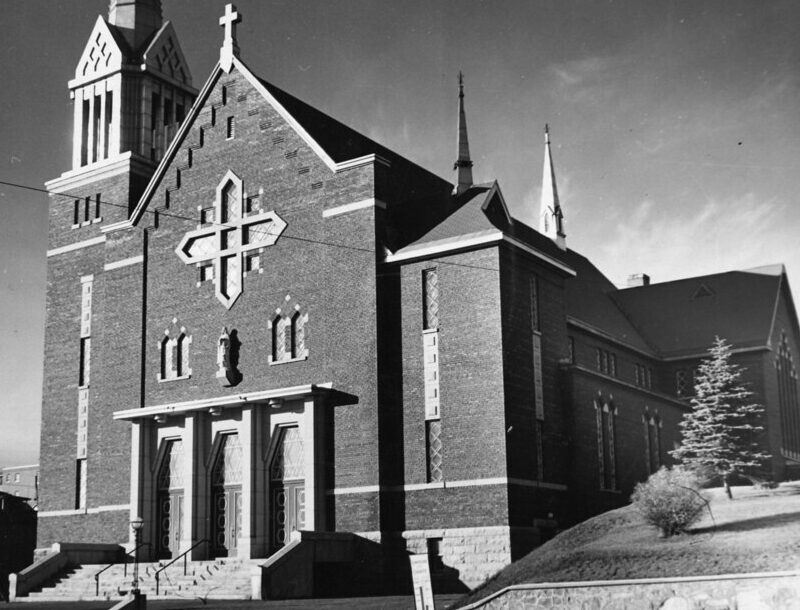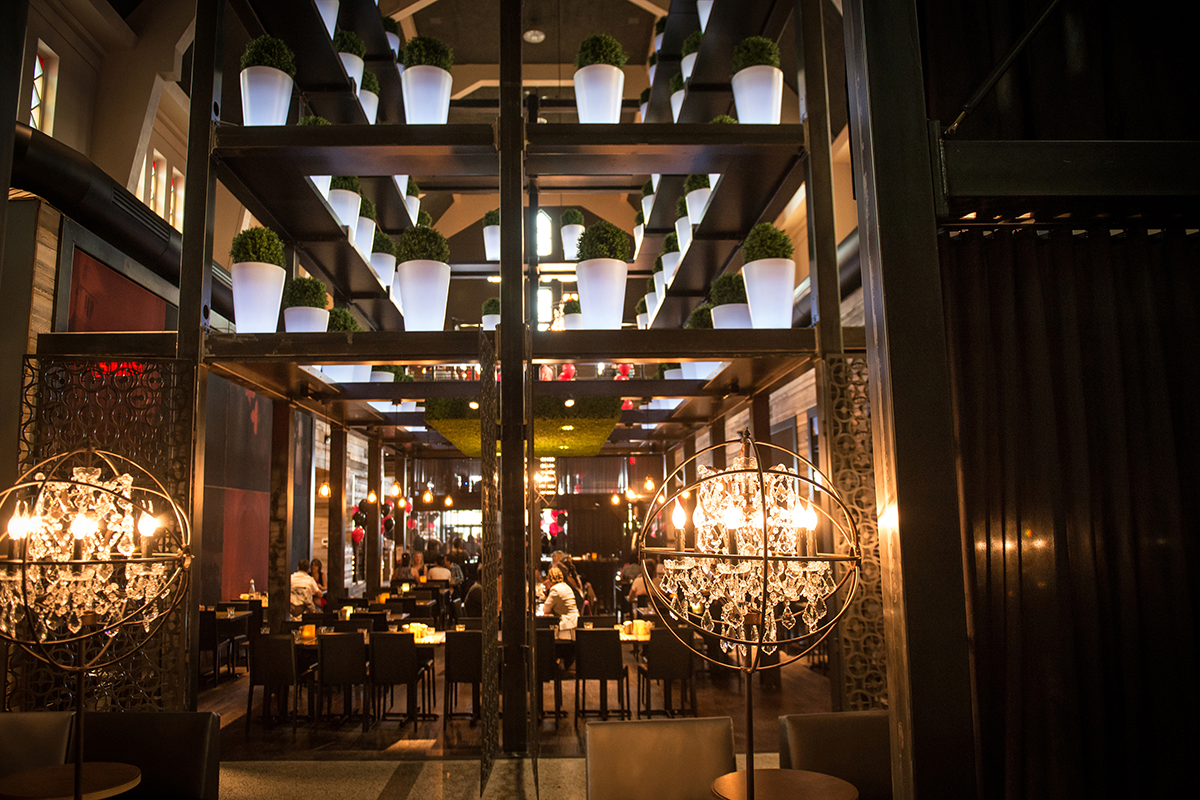



Découvrez la petite histoire de cette bâtisse centenaire qui fut le témoin de changements majeurs dans les mœurs des Sherbrookois au fil des décennies.


« On sait très peu de choses sur la première église Sainte-Thérèse, érigée en 1922, autre qu’elle a été bâtie en même temps que sa paroisse fut créée », explique Marie-Ève Gingras du Musée d’histoire de Sherbrooke.
Elle poursuit : « Dans les années 1900, Sherbrooke comptait environ 11 125 habitants. En 1922, le chiffre avait plus que doublé pour atteindre 24 000 ». La bourgeonnante ville de Sherbrooke avait besoin de nouvelles paroisses pour rassembler les nouveaux arrivants, majoritairement des ouvriers. À cette époque, 75 % de la population était franco-catholique et fréquentait assidument les églises de la région
On April 12, 1922, the Sainte-Thérèse Church opened its doors and Monsignor Paul-Stanislas Larocque welcomed the first members of his congregation to celebrate mass, baptisms and weddings.
A few years later, in 1938, the church fell victim to a major fire. As a result, it had to be partially rebuilt—a reconstruction project overseen by architect Denis Tremblay. On reviewing the original building plans, Tremblay decided to alter part of the façade, aided by one Louis-Napoléon Audet, a noted fellow architect who designed many sacred buildings throughout the province, including the landmark Saint-Michel Cathedral Basilica in Sherbrooke.
Both men drew their inspiration from the contemporary style of Dom Bellot, un religieux et architecte français ayant travaillé autant sur le vieux continent qu’ici, au Québec. Parmi ses plus grandioses réalisations, notons le dôme de l’oratoire Saint-Joseph à Montréal et la façade de l’abbaye Saint-Benoît-du-Lac.
The church reopened in 1952 in the midst of the Duplessis era when Roman Catholicism played a major role in Quebec society. According to the Sherbrooke History Museum, at that time, the city was home to 55,000 inhabitants, 75% of whom were Catholic.
The most active period for the Sainte-Thérèse-d’Avila Church were the years between 1950 and 1965. According to Marie-Ève Gingras, religion provided a common bond between people. “Say what you like about Catholicism at that time, it did result in social cohesion by encouraging communities to gather and help one another in times of need.”


Le temps passe et les nouvelles générations sont moins pratiquantes que celles de leurs parents et grands-parents. Les églises se vident, mettent la clé sous la porte… et certaines sont vendues. En 2000, l’église Sainte-Thérèse-d’Avila remballe ses cierges, son calice et son ciboire et ferme définitivement ses portes. Une page d’histoire est tournée dans le diocèse de Sherbrooke.
"It really wasn’t a shock to most people,” recalls Marie-Ève Gingras. “Church attendance had been dropping for decades, so we were used to churches being closed, one after the other.”
“Quebecers have an ambivalent attitude towards religious buildings. They view them as landmarks and part of Quebec’s heritage. Even people who no longer attend church don’t want to see them disappear altogether. You could say that Quebecers have a cultural, rather than a sacred, attachment to these hallowed sites.”
While some churches have been demolished, others have been repurposed…
Shortly after Sainte-Thérèse closed, André L’Espérance, a key player in the local tourism industry, acquired this heritage building with the goal of putting it to good use and showcasing its architecture and history.
At first, the former church housed the administrative offices of PAL+, the tourism group that operates Le Grand Cru cruise boat as well as two hotels: Espace 4 Saisons and Versō. Later, the building was transformed into a stunning restaurant—the OMG Resto (formerly OMG Burger)—where the innovative menu features flavourful food, imbued with regional ingredients!